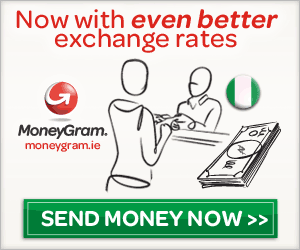THESE DAYS, doing an impromptu newspaper interview is a piece of cake for Mirjana Radovanov. Yet just a few years ago, even the most basic social interactions were “a complete nightmare” for the Serbian woman – because of her stammering.
It was as a nine-year-old in the early 1980s that Radovanov, from Vrbas in her country’s north, first clocked the condition. “You know, in school you have this speaking in front of other pupils, and I noticed I had difficulty,” she says. “I didn’t speak to anybody about it. I started to hide it and avoid every situation that would involve speaking.”
Her stammer was usually offset by potentially anxiety-provoking situations, such as speaking in front of strangers, but could sometimes surface when she least expected it.
“Tricks”, as Radovanov puts it, were utilised as a disguise, such as substituting words with more easily pronounceable synonyms. “But when someone asks your name and address you can’t substitute that,” she points out. “Then I would appear to be nervous; I was trying to do anything just to not let anyone know I was stammering. It was a huge thing, such a shame... it was very difficult to live like that.”
Scant awareness of stammering existed in Serbia at the time, and Radovanov saw no support routes – so she planned her life with concealment in mind. She ditched drama school and “put completely out of mind” careers with varying forms of public speaking, opting for engineering.
“I was lucky that during the university many examinations were written, there were just a few that I needed to speak for, and for any of them I got lower marks,” she says. “I was trying not to let the teacher know about my stammering so I appeared to be nervous, to not know the subject. And that was just easier for me than to let anyone know about the stammering, which was just out of the question.”
A turning point came when, having emigrated to Ireland in 2000 to work as a software engineer. Radovanov’s em-ployers spotted her promotion potential, a move that required making a presentation – a prospect that “horrified” her. Accordingly, she made her excuses: ‘too busy, maybe next time’.
“At a certain point I could not avoid it anymore,” she continues. “During that preparation process, my manager was very good, he organised some kind of mock presentation just for me to mimic how it was going to be like. It was just in front of him and two other colleagues. I stood up – and it was very simple, to read slides – but I couldn’t talk. I just stood there, not saying a word. They probably thought ‘This person has a very, very complex social phobia.’ I just wanted the earth to break, for me to fall in, and disappear.”
But this painful experience served a mammoth purpose for Radovanov, who remembers thinking: “I can’t live life like this.”
She gleaned information from the Irish Stammering Association’s website, and in September 2006 joined the Dublin Adult Stuttering (DAS) programme, which is run through the HSE free-of-charge.
“It was a life changing experience,” says Radovanov, who still stammers occasionally but has much more control over it. “Their approach is to make you friends with your stammering, to accept yourself as a person who stammers.”
The DAS operates through group therapy, so for many, it is their first time openly discussing their stammering, and after a concentrated programme of eight weeks, monthly support groups take place for all participants.
These days, Radovanov can do the ordinary tasks that once seemed insurmountable, such as “approaching the counter to buy a cinema ticket, to buy a top-up card in a shop, a ticket at a train station.” It is, she says, “a relief”. She can also now complete work presentations, although feels she could make further strides towards being more open with her stammering in the workplace.
Accepting your stammer without negative feelings, and reducing your avoidance of certain situations, are “key”, she underlines.
ETHNIC MINORITIES are among those contacting the Irish Stammering Association (ISA), confirms its general manager Jonathon Linklater, and three of the incoming nine participants on the HSE’s next DAS programme are non-Irish.
Linklater, who is a speech and language therapist and stammers himself, says around one per cent of Ireland’s adult population stammers, translating into 45,000 people. But less than half are believed to seek therapy.
“It’s a multi-factorial disorder,” adds Linklater as to the origins of stammering or stuttering, “so there would often be a genetic predisposition to it, that’s what the evidence is showing us. There’ll also be environmental factors involved as well.”
To increase awareness and support, the ISA has been developing self-help groups countrywide, through funding from the Department of Community, Rural and Gaeltacht Affairs.
“If people are feeling isolated and not talking about it, I think it becomes a huge thing, a massive weight on people,” he explains, “and one of the things we’re doing with having these support groups around the country is to provide options where people can go to talk about it.”
It’s important for people with stammers, and their families, to access further information about the condition, as it is all-too-easy to dish-out and accept bad advice.
“There’s a lot of misinformation out there, a lot of stuff on the internet,” says Linklater. “The ISA would have a organised campaign to reduce the number of ‘cure’ websites that are being advertised, as there’s no evidence that they can actually do that.”
He continues: “People often say to kids, ‘Slow down, take a deep breath, think about what you have to say’ – there is no evidence that those are the causes of stammering, so it’s just bad advice. So if a kid is getting a negative idea around the stammering, they try to hide it... but if you can create an environment where it’s okay to stammer you can lessen the negativity around it.”
One such environment, for both children and adults, is speech and language therapy. Differing therapy methods exist, chiefly ‘fluency shaping’ and the ‘stuttering modification approach’, and people can contact their health office for the contact details for their local speech and language therapist, or do so through the ISA’s website.
Linklater, who is doing a PhD in the effectiveness of stammering therapy at UL, adds that negative perceptions of the stammerer should be kept in check.
“There’s a good line from one of the old academics, which probably isn’t PC anymore, when he said ‘The person who stammers is just as maladjusted as the next person,’” says Linklater. “The main thing for people who stutter is that they stutter, so it’s not that they are anxious in general, but they may be in certain situations.”
On a personal level, the challenge of stammering has added to his strength of character, and is just something that life has presented him with, explains Linklater, who hails from England’s northeast. It’s also helped him decide upon his career path.
Those with debilitating stammers can certainly be assisted, says Linklater, but first they must come forward. “It’s important to speak up, get involved and not hold back,” he says. “By the very nature of the difficulty, it’s hard to talk about stammering – but it is important to speak up.”
For further information visit www.stammeringireland.ie












